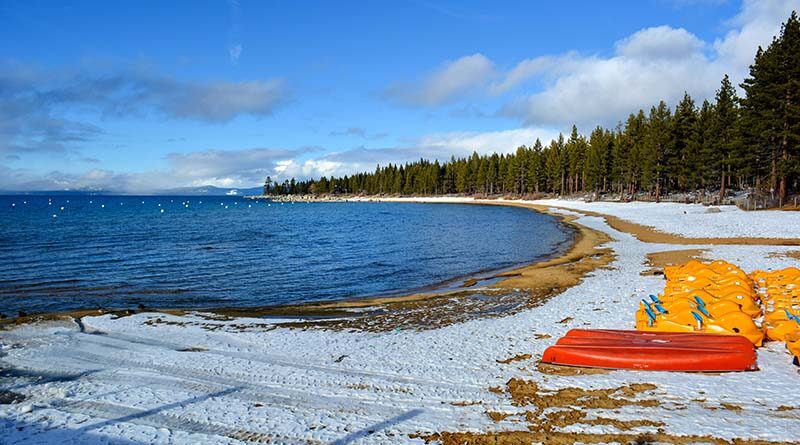On the Water During Winter
Winter is coming, bringing harsh conditions for on-the-water activities. The fun isn’t over, but your equipment and procedures will need to be adjusted. Read on for tips and instructions on how to make the most of the water during these colder months.
The days of soaking up the sun on the water are behind us for now. While boating and fishing are still possible during these colder winter months, there are new precautions to include in your routine until temperatures rise again.
On-the-water activities during the winter months can present some unique challenges, but proper preparation and precautions can still offer a rewarding experience. Below, you will find helpful tips to keep yourself in good health and maximize your winter water experiences.
First and foremost, dress in layers. Staying warm helps support your immune system and reduces the risk of exposing you to conditions that make you more susceptible to illness.
Start with a moisture-wicking base layer that sits close to your skin. This layer helps to move sweat away from your body, keeping you dry and preventing the cooling effect of wet clothing. Choose materials like merino wool or synthetic fabrics. The middle layer is the insulation layer, which traps and retains heat. Choose materials like fleece, down or synthetic insulations. The thickness of this layer can vary depending on the severity of the cold. The outer layer provides protection from wind, rain, water and snow. The outer layer should be waterproof and windproof to keep you dry and prevent cold air from penetrating. Breathable materials are the most comfortable as they allow moisture to escape. Complete this look with a warm hat that covers your ears, mittens or gloves and a neck gaiter. The more waterproof gear you wear, the better, as it will help prevent against hypothermia.
Next, protect your extremities from cold temperatures. Your hands, feet and nose are more susceptible to heat loss because they have a higher surface area relative to their volume, and the cold temperatures affect your hands and feet first. This can be prevented by wearing insulated, waterproof gloves and warm socks to prevent frostbite. Hand and foot warmers are also nice to keep in your pockets and shoes for additional heat.
Your gear and equipment should change with the weather as well. There are fishing rods designed specifically for cold weather and winter fishing conditions. These rods are often engineered to address the challenges posed by colder temperatures and icy conditions. Cold-weather fishing rods are constructed from materials that perform well in lower temperatures. Graphite and fiberglass are used for their durability and flexibility in cold conditions. Additionally, some rod handles are made with materials that provide insulation, preventing your hands from getting too cold when holding the rod. Cork and ethylene vinyl acetate (EVA) foam are popular materials for handles. Winter-specific rods have a coating that is resistant to temperature extremes. This feature can help prevent damage and deterioration caused by exposure to cold weather. Lastly, monofilament, fluorocarbon, braided and other cold-weather coated lines help with preparation for cold temperatures.
Monofilament lines remain relatively supple in cold temperatures, reducing the chances of line memory (coiling) and making them easier to handle. Fluorocarbon lines are known for their low visibility underwater and abrasion resistance. They resist absorbing water, making them suitable for cold temperatures and are often stiffer than monofilament, so be aware of this characteristic when selecting a line for your fishing conditions. And braided lines, made from woven synthetic fibers, are famous for their strength and sensitivity. These lines are less prone to line memory and ice buildup compared to monofilament.
This may be obvious – or not, but it’s important to stay hydrated even in cold weather. We are made of water. According to maine.gov, our bones comprise 22% water, muscles are 76% and blood, 83%. Drink warm fluids to help maintain body temperature. Water also transports nutrients, carries waste away from the cells and helps regulate body temperature by distributing heat and cooling the body through perspiration.
If you’re in a location where there is snow, use sunscreen. The sun’s reflection on snow and ice can be intense and cause sunburn. Wind chill also will make cold temperatures feel even colder. It might be helpful to check the weather forecast to prepare for wind by wearing wind-resistant clothing.
In addition to preparing yourself with all the appropriate clothing and gear, take breaks to warm up if the weather is becoming intolerable. Know when to call it a day, always let someone know your schedule for the day and carry emergency supplies, such as a basic first aid kit and an emergency blanket. Being educated on the signs of hypothermia is important as well. Hypothermia occurs when the body loses heat faster than it can produce it, causing a dangerously low body temperature. When it starts, it needs to be promptly addressed. Pay attention to shivering, slurred speech, clumsiness, lack of coordination, confusion, fatigue and weakness.
Safety should always be a top priority when boating and fishing in winter conditions. Taking these precautions will make for a more enjoyable and safe experience during the colder months.
For more tips and instructions on executing safe boating, visit https://dbw.parks.ca.gov/?page_id=28711. For information regarding fishing in California, please visit https://wildlife.ca.gov/.


